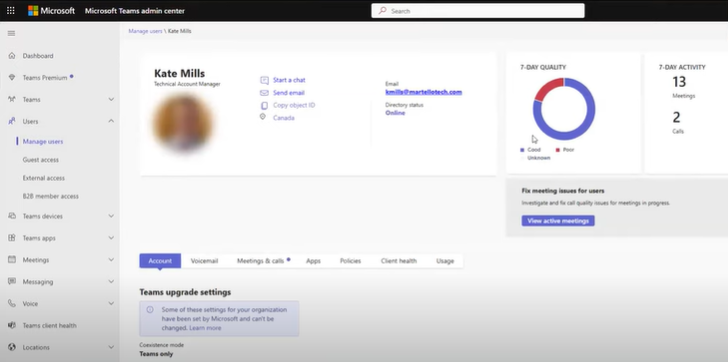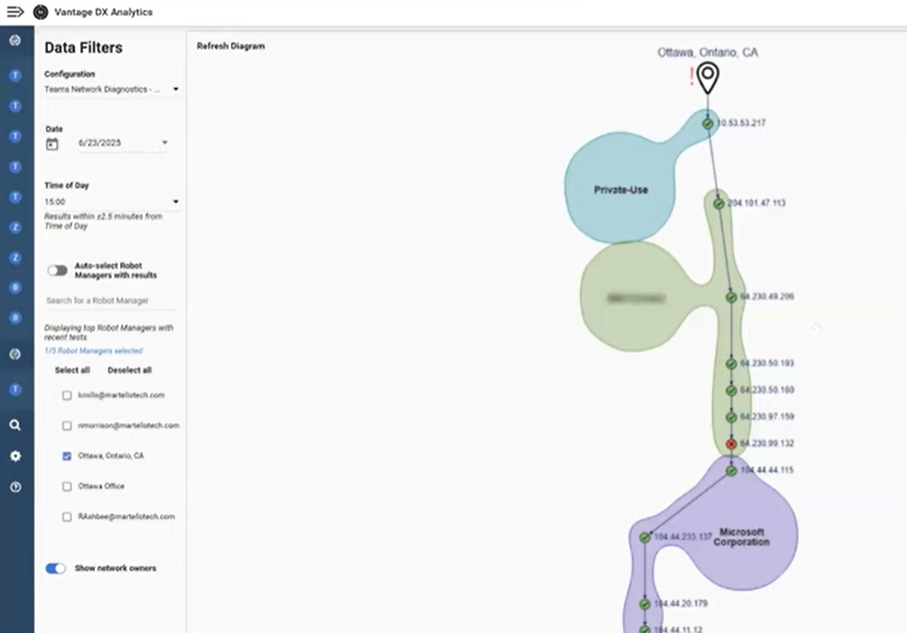Your big VIP Teams call just went south. Do you have the tools to troubleshoot – fast?
Microsoft Teams Monitoring
Imagine you’re the IT lead responsible for your organization’s Microsoft Teams experience. A big call with the board comes up, loaded with company VIPs — and it’s chock full of issues. Lag, choppy audio, bad connections.
After the call, there’s a knock at your door. Not a happy knock.
You answer and standing there is your CEO, stamping her foot demanding to know what went wrong. You jump on your native Microsoft tools to get her some answers but can’t drill down deep enough or see a sufficiently complete picture to be able to say. Which won’t go over well in the C-suite…
That was the fictional scenario we explored in our recent Power Moves webinar. Though honestly, for a lot of IT professionals it’s less of a “what if” and more of a “been there, done that” situation. To troubleshoot effectively, most IT departments need far more granularity and specificity than native Microsoft tools can provide.
Where native tools fall short

IT professionals know VIP users aren’t likely to open trouble tickets and wait patiently for Teams issues to be resolved. Their time and reputations are on the line anytime they’re communicating — especially with investors or the board of directors. They want answers, and fast on the heels of those they want solutions.
To be sure, the native Microsoft admin console can serve up helpful basic information. The screen grab below shows how you can use it to isolate a specific user — in this case, the irritated exec, “Kate Mills” — to get an overall view of her recent call experiences. The console shows that Kate has experienced more than one poor-quality call lately. And through the Meetings > Calls menu, it’s clear this most recent one was bad from end to end.
The first problem with native Microsoft tools, however, is that you may have to wait to get even those particulars. Call information is propagated to the Teams admin console only once every 15 minutes. Which means in the moment you might not be able to tell your CEO a thing. Which is not a good look.
Even once the information is there, it’s fairly high-level. For more granularity, you need to augment your native tools with a second application such as Microsoft PowerBI. But more apps mean more IT costs. PowerBI has a pretty high price tag, and even with it you can only see call quality on a fairly large scale — by country or subnet.
All this is to say, native Microsoft tools can’t often give you all the information you need. Definitely not enough to tell the CEO how this isn’t going to happen again.

What do you really need to see?
In our webinar example, the root cause of the issue was latency injected into the call traffic by an ISP’s network. With native Microsoft tools, you can see which network is at fault — but not precisely where in the network it’s originating.
What’s really needed is a way to pinpoint the exact node where the latency is happening, right down to the IP address. That gives you precise information to take to your ISP in a ticket and say, “You need to fix this.”
As our webinar showed, Vantage DX from Martello can give you that perspective. And unlike native Microsoft tools, you don’t need to hop between applications and windows to manage your Teams environment. Vantage DX provides the full set of capabilities to get the detailed insights needed for rapid troubleshooting and resolution — in a single console. One dashboard lets you see all your Teams services including Teams collaboration, Teams Phone and Teams Rooms.
More paths to resolution
Separate from raising a ticket with your ISP — whose responsiveness may depend on what kind of SLA you have with them — with complete, end-to-end, specific insights into Teams issues you can also take matters into your own hands. For example, you’re at least able to test the problem node ahead of any future calls and make alternate arrangements if it’s still underperforming. You could even choose to route calls through a different provider.
Equipped with deeper insights from Vantage DX, you can find better solutions more efficiently — and have better-informed answers for your CEO when she comes knocking. Providing higher quality Teams services means you’ll keep VIPs happier and get fewer visits from frustrated executives.
Interested in trying it out for yourself? Start your free hands-on trial of Vantage DX and see real Microsoft Teams insights – fast. TRY NOW!


